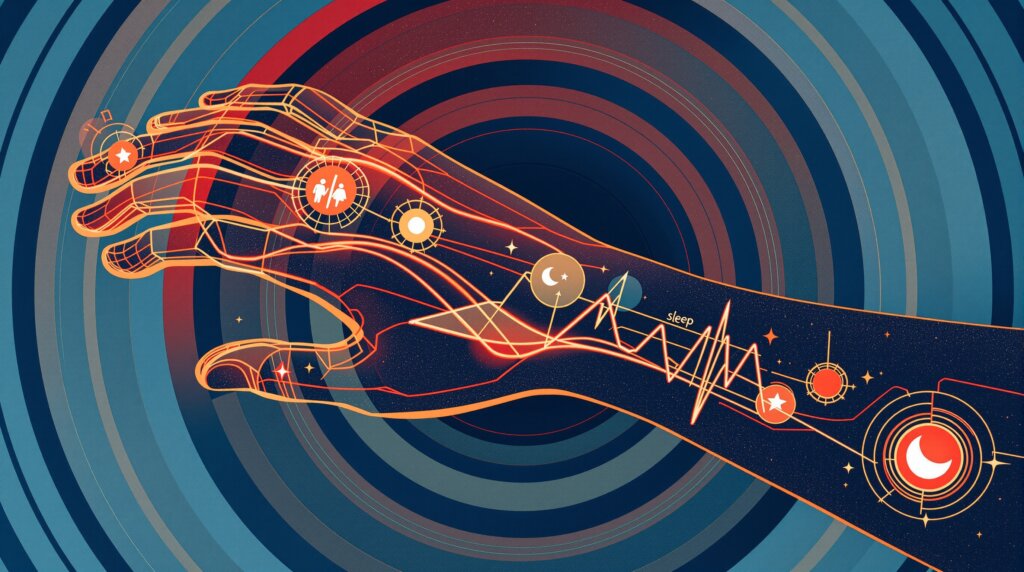Understanding Fitness Bands with SpO2 Monitoring
The Evolution of Blood Oxygen Tracking in Wearables
Fitness bands have evolved far beyond simple step counters, now incorporating sophisticated health monitoring capabilities that were once limited to medical facilities. Among these advanced features, SpO2 (blood oxygen saturation) monitoring has emerged as a particularly valuable tool for health-conscious individuals and fitness enthusiasts. SpO2 measures the percentage of oxygen-saturated hemoglobin in your blood, providing insights into how efficiently your body is delivering oxygen to your tissues.
The integration of SpO2 sensors into fitness bands represents a significant leap forward in personal health monitoring. While these devices may not always match the precision of clinical-grade equipment, they offer the convenience of continuous monitoring throughout your daily activities and sleep. This guide will help you navigate the sometimes complex world of SpO2-enabled fitness bands, understanding both their capabilities and limitations to make an informed purchasing decision.

The Science Behind Blood Oxygen Monitoring
Why SpO2 Matters for Your Health and Fitness
Blood oxygen saturation typically ranges between 95-100% in healthy individuals, though this can vary based on factors like altitude, fitness level, and underlying health conditions. When your SpO2 levels drop below normal ranges, it may indicate issues with your respiratory or cardiovascular systems, making regular monitoring particularly valuable for early detection of potential health concerns.
For fitness enthusiasts, SpO2 monitoring offers insights into training efficiency and recovery. During intense exercise, your muscles demand more oxygen, and tracking how quickly your levels return to baseline can help optimize your training intensity. Additionally, monitoring SpO2 during sleep can reveal important information about sleep quality and potential breathing disruptions that might otherwise go unnoticed.
However, it’s important to understand that wrist-worn devices sometimes provide readings that aren’t as reliable as clinical measurements. Factors like skin pigmentation, ambient temperature, and motion can affect accuracy, so these devices should be viewed as wellness tools rather than medical diagnostic equipment.
How Fitness Bands Measure Your Blood Oxygen
The Technology Behind Optical Sensors
Modern fitness bands use photoplethysmography (PPG) technology to estimate blood oxygen levels through your skin. This process involves emitting red and infrared light through LEDs and measuring how much light is absorbed by your blood. Oxygenated and deoxygenated blood absorb these wavelengths differently, allowing the device’s algorithms to calculate your approximate SpO2 level.
The sensors typically include multiple photodiodes that detect the reflected light, though the positioning and quality of these sensors can significantly impact accuracy. Premium devices often feature more sophisticated sensor arrays with better signal processing, which tends to provide more reliable readings, especially during movement or in challenging conditions.
Continuous vs. Spot-Check Monitoring
Most fitness bands offer two modes of SpO2 monitoring: spot checks and continuous tracking. Spot checks provide on-demand readings when you remain still for a brief period, often delivering more accurate results. Continuous monitoring tracks your levels throughout the day and night but may be less precise and significantly impacts battery life.
The choice between these modes often depends on your specific needs and tolerance for battery drain. For sleep monitoring, continuous tracking can be particularly valuable, while athletes might prefer the accuracy of spot checks during specific training sessions.
Essential Features to Consider When Choosing
Balancing Accuracy, Battery Life, and Usability
When evaluating SpO2-enabled fitness bands, sensor accuracy should be your primary consideration, though this information isn’t always readily available from manufacturers. Look for devices that have undergone clinical validation or provide transparency about their accuracy ranges. Keep in mind that even the best consumer devices may show variations of 2-4% compared to medical-grade equipment.
Battery life becomes a crucial factor when using continuous SpO2 monitoring. While many fitness bands advertise impressive battery longevity, enabling continuous blood oxygen tracking can reduce this by 30-50%. Consider whether you’re willing to charge your device more frequently for the benefit of constant monitoring, or if periodic spot checks would meet your needs.
The display quality and user interface also play important roles in your daily experience. Some bands provide real-time SpO2 readings on the device itself, while others require you to check your smartphone app. If immediate access to your blood oxygen data is important, prioritize devices with clear, easily readable displays.
Complementary Health Metrics
SpO2 monitoring becomes most valuable when combined with other health metrics. Look for devices that also track heart rate variability (HRV), sleep stages, and stress levels, as these measurements work together to provide a more complete picture of your health status. This integrated approach can help you identify patterns and correlations that might not be apparent from isolated metrics.
Water resistance is another practical consideration, especially if you plan to wear your device during swimming or in humid conditions. Most quality fitness bands offer at least IPX7 or IP68 ratings, ensuring they can withstand daily activities and exercise routines.
Practical Applications for SpO2 Monitoring
Optimizing Training and Health Awareness
Athletes and fitness enthusiasts often use SpO2 data to optimize their training intensity and recovery periods. By monitoring how quickly your blood oxygen levels return to baseline after exercise, you can gauge your cardiovascular fitness and adjust your training accordingly. However, this data should be interpreted as part of a broader fitness picture rather than the sole determinant of your training decisions.
Sleep monitoring represents another valuable application, particularly for detecting potential breathing irregularities during rest. While fitness bands cannot diagnose sleep apnea or other medical conditions, they can identify patterns that warrant discussion with a healthcare provider. Many users find that tracking their nighttime SpO2 levels helps them understand the impact of lifestyle factors like alcohol consumption or sleeping position on their sleep quality.
For individuals living at high altitudes or traveling to mountainous regions, SpO2 monitoring can provide valuable insights into acclimatization. As your body adjusts to lower oxygen levels, tracking these changes can help you make informed decisions about activity levels and recognize when you might need to descend to lower elevations.
Making the Right Choice for Your Needs
Evaluating Your Priorities and Budget
The fitness band market offers SpO2-enabled devices across a wide price spectrum, from budget-friendly options around $50 to premium models exceeding $300. Budget devices may provide basic SpO2 functionality but often sacrifice accuracy, battery life, or build quality. Premium models typically offer more sophisticated sensors, better algorithms, and additional health monitoring features.
Consider your smartphone ecosystem when making your selection, as some devices integrate more seamlessly with specific operating systems. The accompanying app experience can significantly impact how useful your SpO2 data becomes, so research the software ecosystem before making your final decision.
When evaluating different options, think about your primary use cases. If sleep monitoring is your main interest, prioritize devices with strong nighttime tracking capabilities and comfortable, low-profile designs. For fitness applications, focus on devices with quick spot-check capabilities and robust activity tracking features.
The blēo Advantage
For those seeking medical-grade accuracy without ongoing subscription fees, devices like the blēo band offer compelling value propositions. With advanced sensors designed for reliability and a focus on longevity signals rather than just basic activity metrics, premium options can provide the accuracy and features serious health monitors require while maintaining the convenience and comfort of everyday wear.
The Future of Blood Oxygen Monitoring
SpO2 monitoring in fitness bands represents just the beginning of accessible health tracking technology. As sensors become more accurate and algorithms more sophisticated, these devices will likely play an increasingly important role in preventive healthcare and early health issue detection.
The key to maximizing the value of any SpO2-enabled fitness band lies in understanding both its capabilities and limitations. While these devices offer valuable insights into your health and fitness, they work best as part of a comprehensive approach to wellness that includes professional medical care when needed. By choosing a device that aligns with your specific needs and using the data it provides thoughtfully, you can take meaningful steps toward optimizing your health and longevity.
Frequently Asked Questions
Do fitness bands with SpO2 accurately measure blood oxygen?
Can a fitness band with SpO2 help detect sleep apnea?
Which features should I look for when buying a fitness band with SpO2 for health monitoring?
How often should I wear my SpO2 fitness band to get useful health insights?
Are SpO2 readings from fitness bands considered medical-grade and should I rely on them for treatment decisions?



